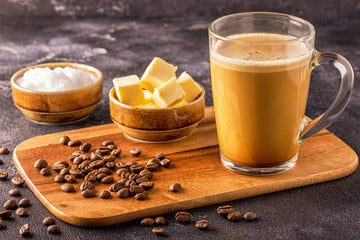Ginger (Zingiber officinale) is a versatile spice used in many cuisines around the world. Originally native to Southeast Asia, ginger is now grown in many tropical regions and is highly prized for its medicinal and culinary properties. In this post, we'll dive deep into the world of ginger, exploring its history, ingredients, health benefits, uses, and more.
History of ginger
Ginger has a long history dating back to ancient times. It has been used as a medicinal herb in China and India for thousands of years and later found its way to Europe via the Silk Road. By the 1st century AD, ginger was already a sought-after spice in Rome and became an important trading commodity in Europe during the Middle Ages.
Ingredients of ginger
Ginger contains a variety of bioactive compounds, including gingerols, shogaols and zingerone. These compounds give ginger its characteristic flavor and health properties:
-
Gingerols: The primary bioactive compound in fresh ginger that has antioxidant and anti-inflammatory properties.
-
Shogaols: Formed from gingerols during the drying process and have stronger pain-relieving properties.
-
Zingerone: Forms during cooking and gives ginger its characteristic sweet and spicy taste.
Health benefits of ginger
-
Digestive health: Ginger has traditionally been used as a remedy for nausea and stomach upset. It can speed up stomach emptying and aid the digestive process.
-
Anti-inflammatory: The gingerols and shogaols in ginger have powerful anti-inflammatory properties. This can be particularly helpful for chronic inflammatory diseases such as arthritis.
-
Antioxidant effect: Ginger contains antioxidants that help neutralize free radicals and reduce oxidative stress in the body.
-
Immune system: Ginger has antimicrobial and antiviral properties that can help boost the immune system and fight off infections.
-
Pain reduction: Ginger has analgesic properties that can help with headaches, menstrual pain and joint pain.
Applications of ginger
-
In the kitchen: Ginger is commonly used in Asian dishes, from curries to stir-fries. It can be used fresh, dried or as a powder in recipes and adds a spicy note to dishes.
-
Tea: Ginger tea is a popular beverage that can be consumed warm or cold. It can help soothe the stomach and warm the body.
-
As a dietary supplement: Ginger can be taken in the form of capsules or extracts to reap its health benefits.
-
Aromatherapy: The scent of ginger is used in essential oils and is said to have a calming effect.
Cultivation and processing
Ginger is grown in tropical regions around the world. The plant requires warm, moist soil and shade to grow optimally. After harvesting, ginger is cleaned and can be made into various forms, including dried, ground or as an extract.
Side effects and precautions
Although ginger offers many health benefits, some precautions should be taken. In high doses, it can cause stomach upset or heartburn. People taking blood thinners or medications for high blood pressure should also be cautious, as ginger can interact.
Conclusion
Ginger is a versatile spice that has both culinary and medicinal uses. With its long history, bioactive compounds and diverse health benefits, ginger is a valuable food that should be in every kitchen or medicine cabinet.





